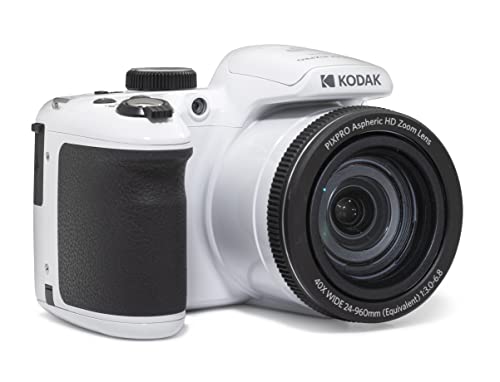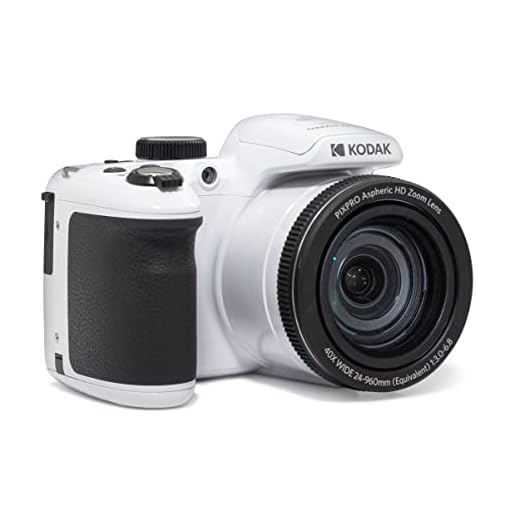




Choosing the right digital camera can be a daunting task, especially when it comes to understanding how many pixels are necessary for your needs. Pixels are the tiny dots of color that make up a digital image, and the number of pixels in a camera’s sensor directly affects the quality of the photos it produces.
So, how many pixels is good for a digital camera? The answer depends on how you plan to use the photos. For social media sharing and viewing on screens, a camera with around 12-16 megapixels is usually sufficient. However, if you plan to print your photos or need higher quality images for professional use, you may want to consider a camera with 20 megapixels or more.
What is the best resolution for a digital camera?
When it comes to choosing the best resolution for a digital camera, it largely depends on your intended use for the photos. Higher resolution cameras generally offer better image quality and more details, especially when the images are printed in large sizes or cropped extensively.
For most casual photographers and social media sharing, a camera with a resolution of around 12-16 megapixels is usually more than sufficient. This resolution allows for good quality prints up to 8×10 inches and provides enough detail for online sharing.
Considerations for higher resolutions:
However, if you plan on printing large posters or need the flexibility to crop images heavily while still maintaining quality, opting for a camera with a resolution of 20 megapixels or higher might be beneficial.
It’s important to note that higher resolution cameras also produce larger file sizes, which can impact storage space and processing speed. Therefore, consider your storage capabilities and editing software when selecting the resolution of your digital camera.
Understanding Pixel Count in Digital Cameras
When it comes to digital cameras, one of the most important specifications to consider is the pixel count. The pixel count refers to the number of pixels that make up the image captured by the camera. In simple terms, the more pixels a camera has, the higher the resolution of the images it can produce.
The pixel count is often expressed in terms of megapixels, which is equal to one million pixels. For example, a camera with a resolution of 12 megapixels has a total of 12 million pixels in each image it captures. Higher megapixel counts generally result in sharper and more detailed images, especially when printing or viewing them on larger screens.
Factors to Consider:
When determining how many pixels are good for a digital camera, it’s essential to consider your intended use for the images. For casual photography and sharing on social media, a camera with 8-12 megapixels should suffice. However, if you plan to print large posters or crop images extensively, a camera with 16-24 megapixels or more would be ideal.
| Megapixels | Recommended Use |
|---|---|
| 8-12 | Casual photography, social media sharing |
| 16-24 | Prints, cropping, professional photography |
Factors to consider when choosing pixel count
When choosing the pixel count for a digital camera, there are several factors to consider to ensure you get the best quality images:
1. Resolution
Higher pixel counts generally result in higher resolutions, allowing you to capture more detail in your photos. However, keep in mind that extremely high resolutions may not be necessary unless you plan on printing large-format images.
2. Sensor Size
The size of the camera’s image sensor can affect how well it utilizes the pixel count. Larger sensors can offer better image quality, especially in low-light conditions, by capturing more light per pixel.
Consider these factors along with your specific photography needs to determine the appropriate pixel count for your digital camera.
Benefits of Higher Pixel Count
1. Improved Image Quality: Higher pixel count allows for more detail to be captured in each image, resulting in sharper and more high-resolution photos.
2. Better Cropping Ability: With more pixels, you have the flexibility to crop and zoom in on photos without losing quality, making it easier to compose your shots.
3. Enhanced Printing Options: Higher pixel count means you can print larger photos without losing clarity or sharpness, enabling you to create stunning prints for display.
4. Greater Post-Processing Flexibility: More pixels give you more room to adjust and manipulate your images in post-processing, allowing for greater creative control over the final result.
5. Future-Proofing: Investing in a camera with a higher pixel count ensures that your images will meet the demands of future display technologies, such as high-resolution monitors and screens.
Drawbacks of high pixel count
While high pixel count in a digital camera can provide sharp and detailed images, there are some drawbacks to consider:
1. File size: High pixel count images result in larger file sizes, which can quickly fill up your storage space on memory cards and hard drives. This can also slow down the process of transferring and editing images.
2. Processing power: Editing high resolution images requires a lot of processing power, which can be taxing on your computer or editing software. This can lead to slower performance and longer processing times.
It’s important to strike a balance between pixel count and your specific photography needs to avoid these potential drawbacks.
Optimal pixel count for different types of photography
When choosing a digital camera, the pixel count is an important factor to consider, as it directly impacts the quality and resolution of your images. The optimal pixel count can vary depending on the type of photography you are interested in. Here are some general recommendations:
- Portrait photography: For portrait photography, a camera with a pixel count of around 16-24 megapixels is sufficient. This range provides enough detail to capture facial features and expressions without overwhelming the image with unnecessary resolution.
- Landscape photography: Landscape photography typically requires more detail and sharpness to capture the vastness and beauty of nature. A camera with a pixel count of 24-36 megapixels is recommended for landscape photography to ensure high-quality, detailed images.
- Action photography: When capturing fast-moving subjects or action shots, a higher pixel count can be beneficial to freeze the moment with precision. Cameras with 20-30 megapixels are suitable for action photography, providing a good balance between speed and resolution.
- Macro photography: Macro photography, which involves capturing extreme close-ups of small subjects, benefits from a high pixel count to preserve intricate details. Cameras with 24-36 megapixels or more are ideal for macro photography to capture the fine textures and patterns of tiny objects.
- Travel photography: For travel photography, versatility is key, and a camera with a pixel count of 16-24 megapixels is generally sufficient to capture a variety of scenes and subjects with good detail and color accuracy.
Ultimately, the optimal pixel count for your photography needs may vary based on personal preferences and shooting styles. It’s essential to consider the balance between resolution, file size, and image quality to find the perfect camera for your creative vision.
Common misconceptions about pixel count
When it comes to digital cameras, there are several common misconceptions about pixel count that can lead to confusion among consumers. One of the biggest misconceptions is that more pixels always equal better image quality. While it’s true that higher pixel counts can result in sharper images, other factors such as sensor size, lens quality, and image processing also play a significant role in determining image quality.
Another misconception is that you need a high pixel count for all types of photography. In reality, the ideal pixel count depends on the intended use of the photos. For example, if you mainly share photos on social media or view them on a computer screen, a lower pixel count may be sufficient. On the other hand, if you plan to print large photos or crop images extensively, a higher pixel count may be necessary.
It’s also important to note that simply increasing the pixel count without improving other aspects of the camera may not necessarily result in better image quality. A camera with a higher pixel count but a smaller sensor size or inferior lens may actually produce lower-quality images than a camera with a lower pixel count but better overall hardware.
In conclusion, while pixel count is an important factor to consider when choosing a digital camera, it’s not the only factor that determines image quality. Understanding the limitations and trade-offs of pixel count can help you make a more informed decision when selecting a camera that meets your specific needs.
Final thoughts on choosing the right pixel count
When it comes to selecting the right pixel count for a digital camera, it’s important to consider your specific needs and usage. Higher pixel counts can offer more detailed and sharper images, but they also result in larger file sizes and can be overkill for casual photography.
For everyday use and social media sharing, a camera with around 12-16 megapixels should be sufficient. If you plan on printing large photos or cropping extensively, you may want to opt for a camera with a higher pixel count, such as 20+ megapixels.
Remember:
More pixels do not necessarily mean better image quality. Factors like sensor size, lens quality, and image processing play a significant role in determining the overall image quality.
It’s essential to strike a balance between pixel count and other features when choosing a digital camera to ensure you get the best results for your specific needs.
FAQ
What is the ideal number of pixels for a good digital camera?
The ideal number of pixels for a good digital camera depends on the intended use of the photos. For casual photography and social media sharing, a camera with 8-12 megapixels is usually sufficient. However, for professional photography or large prints, cameras with 20+ megapixels are recommended.
Does a higher number of pixels always mean better image quality?
Not necessarily. While higher pixel count can result in more detailed images, other factors like sensor size, lens quality, and image processing capabilities also play a significant role in determining image quality. A camera with a moderate pixel count but excellent overall specifications can often outperform one with a higher pixel count.
What is the minimum number of pixels needed for a digital camera to take clear photos?
The minimum number of pixels needed for a digital camera to take clear photos depends on the camera’s sensor size and lens quality. In general, a camera with at least 8 megapixels can produce clear photos for most everyday photography needs. However, higher pixel counts can provide more flexibility for cropping and enlarging images.
Are smartphones with high-resolution cameras a good substitute for dedicated digital cameras?
Smartphones with high-resolution cameras can be a good substitute for dedicated digital cameras in many situations, especially for casual photography and social media sharing. However, dedicated digital cameras often offer superior image quality, optical zoom capabilities, and advanced shooting modes that may be missing in smartphones.
How does pixel count affect the file size of digital photos?
The pixel count of a digital photo directly affects its file size. Higher pixel counts result in larger file sizes because more information is captured in the image. This means that cameras with higher megapixel counts will produce larger files, which may require more storage space on memory cards and computers.










